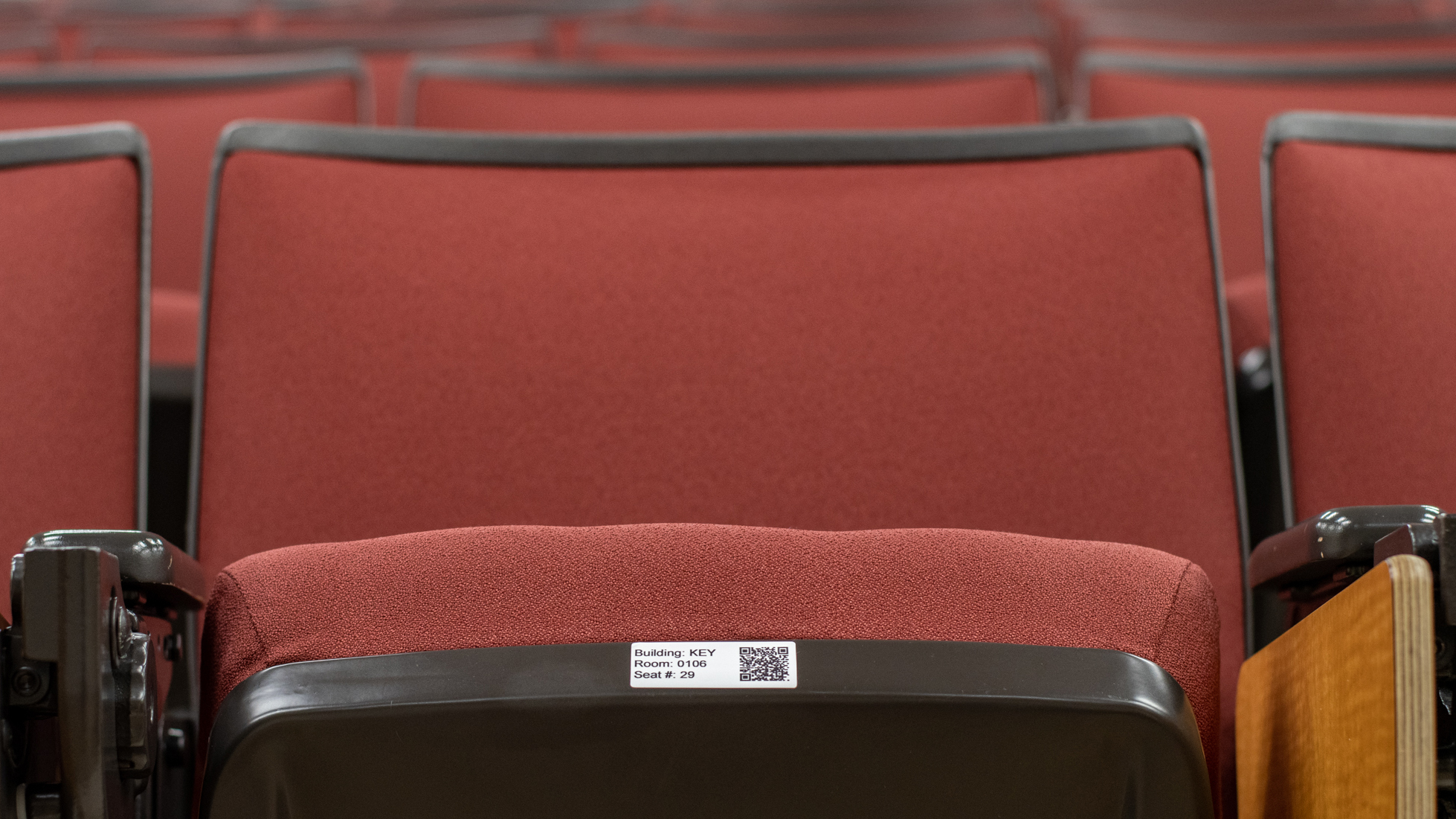QR codes have been scattered in various classrooms across the University of Maryland campus to streamline the process of contact tracing, but some community members are questioning their efficacy.
The university rolled out QR codes in classrooms for the fall 2021 semester as another layer of contact tracing, said Patty Perillo, student affairs vice president.
“If a student says, ‘I don’t know who I was sitting next to,’ the QR code helps with that,” she said.
At the beginning of each class session, students should scan the QR codes closest to their seating location, according to the Division of Information Technology website. DIT also encourages students to sit in the same seat or area of the classroom for each session to narrow tracing even further.
But entering the fourth week of the semester, some classrooms still don’t have the QR codes.
The university is focusing on classrooms with high student density and extended time of close contact, according to the DIT website. Throughout the rest of the year, the university will monitor the need to adopt similar strategies in additional campus spaces such as instructional labs, research spaces, conference rooms, living-learning rooms and dining halls, according to the website.
First priority is given to large classrooms with fixed seating, such as lecture halls and round tables, according to the DIT website. During the first week of September, QR codes were installed in classrooms with moveable seats.
For small rooms — 30 seats or fewer with moveable seats — there will be one QR code for the entire classroom, the website reads.
[UMD to expand COVID-19 testing for asymptomatic individuals]
As a result, University Health Center staff are able to identify and quickly notify those who have been in close contact with a person who has tested positive for COVID-19, according to the website.
The Centers for Disease Control and Prevention defines close contact as “someone who was within 6 feet of an infected person for a cumulative total of 15 minutes or more over a 24-hour period.”
Gregory Hancock, an education professor and the director of the measurement, statistics and evaluation program, teaches a class in the chemistry building. He’s encouraging students in that class of 60 to scan the QR codes.
He appreciates how the university is making a serious attempt to keep students and faculty safe after deciding to return to in-person classes.
“The contact tracing is a good idea in the sense of trying to keep people safe,” he said. “If someone has an exposure, to some extent you can … figure out who might have been in their path.”
However, Hancock isn’t sure how effective the QR codes will be, since students come in contact with many different people each day.
[Return of in-person campus life has made some UMD students anxious, uncertain]
Freshman mechanical engineering major Dhruv Srinivasan received an email two weeks ago notifying him that another student in one of his classes had tested positive.
The email reassured him since it clarified the student wasn’t near him or the professor, therefore not putting him at risk of getting COVID-19, but he was still “really concerned,” since the room was very small, he said.
Srinivasan received the email while he was with friends and went back to his dorm once he saw it. The next morning, he got tested for COVID-19 and received a negative test result.
Srinivasan estimates around 15 to 20 people were getting tested outside the health center at that time. It surprised him to see so many people getting tested since it showed how many people were either concerned about COVID-19 or told to get tested because someone else tested positive.
For this class in particular, Srinivasan doesn’t remember seeing QR codes in the classroom. If there were, he said, students weren’t told to scan them.
“I personally should do a better job of remembering to scan them, but at the same time, I feel like students, faculty and staff should be more proactive about doing that,” he added. “It doesn’t really work if everybody doesn’t do it.”



